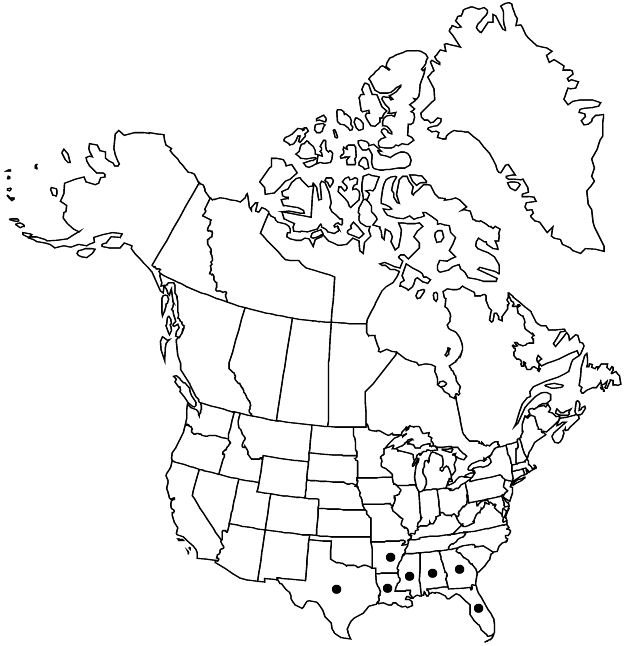Callirhoë papaver
Mem. Amer. Acad. Arts, n. s. 4: 17. 1849.
Plants perennial. Stems 2–4(–10), weakly erect, ascending, or decumbent, 3–10 dm, glabrate or hairy, hairs 4-rayed, stellate, or scattered, simple. Leaves: stipules persistent, oblong, ovate, or rhombic-ovate, 4.3–10(–12) mm; petiole 2–25(–36) cm; blade hastate, cordate, triangular, or ovate, 3- or 5(–7)-lobed, 3–11 × 3.5–13 cm, surfaces hairy, hairs 4-rayed and simple, lobes narrowly lanceolate, linear, linear-falcate, or lanceolate-falcate. Inflorescences racemose; involucellar bractlets 3, rarely absent, narrowly linear, 2–10.5 × 0.1–1.7 mm. Flowers bisexual; calyx lobes valvate in bud, forming apiculate or acuminate point; petals reddish purple without white basal spot, 2.2–4 cm. Schizocarps 7.7–11.2 mm diam.; mericarps 12–20, 2.8–4.2 × 2–3.5 mm, glabrous or sparsely hairy, indehiscent; beaks not prominent, 0.7–1.7 mm; collars scarcely differentiated. 2n = 56, 112.
Phenology: Flowering spring–summer.
Habitat: Pine, oak, and pine-oak woods, margins of woods, dry prairies, old fields
Elevation: 0–200 m
Distribution

Ala., Ark., Fla., Ga., La., Miss., Tex.
Discussion
Callirhoë papaver is known from the Gulf Coastal Plain. It is local and uncommon in Alabama, northern Florida, Georgia, and Mississippi, and more common west of the Mississippi River in Louisiana and eastern Texas.
Selected References
None.